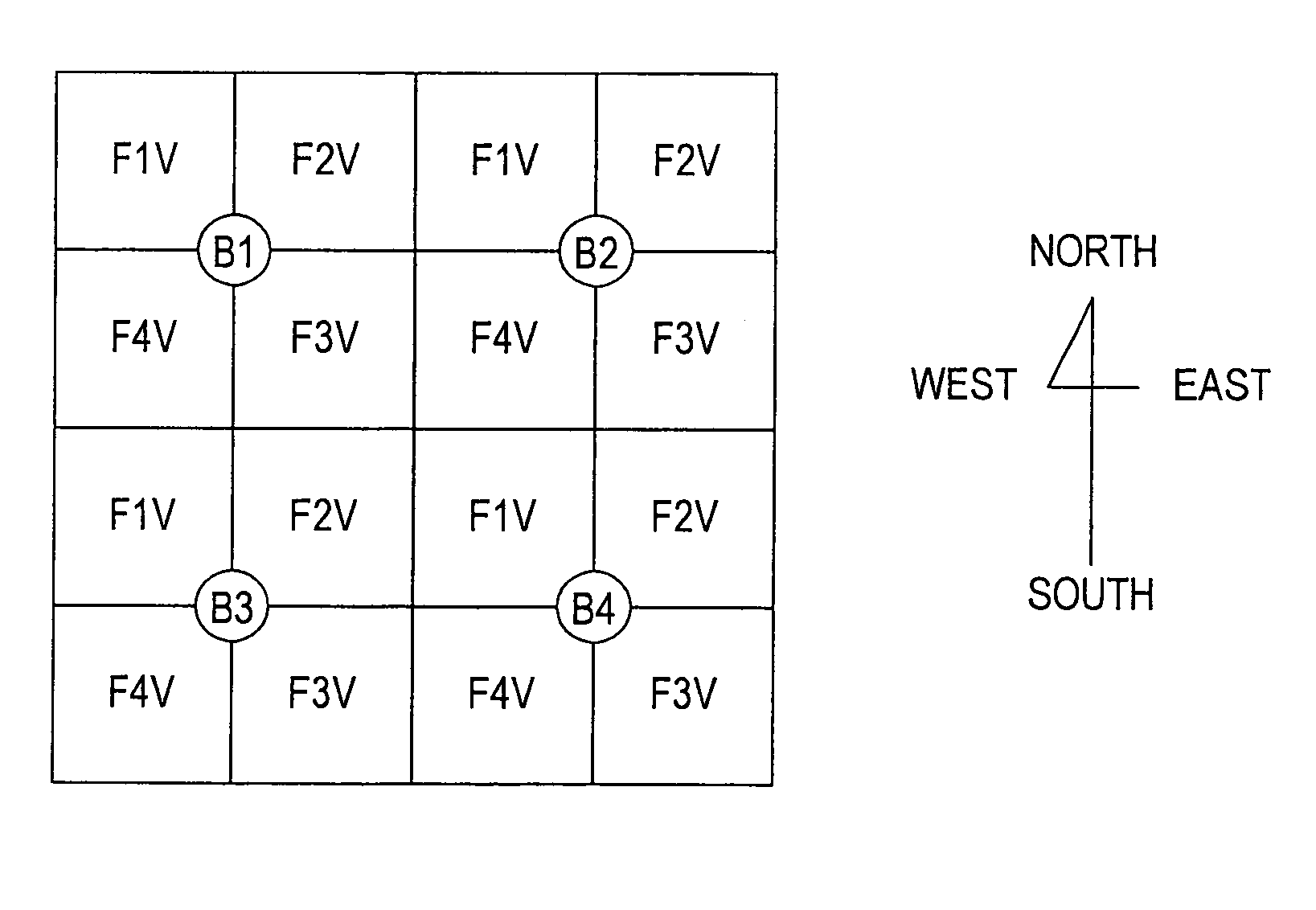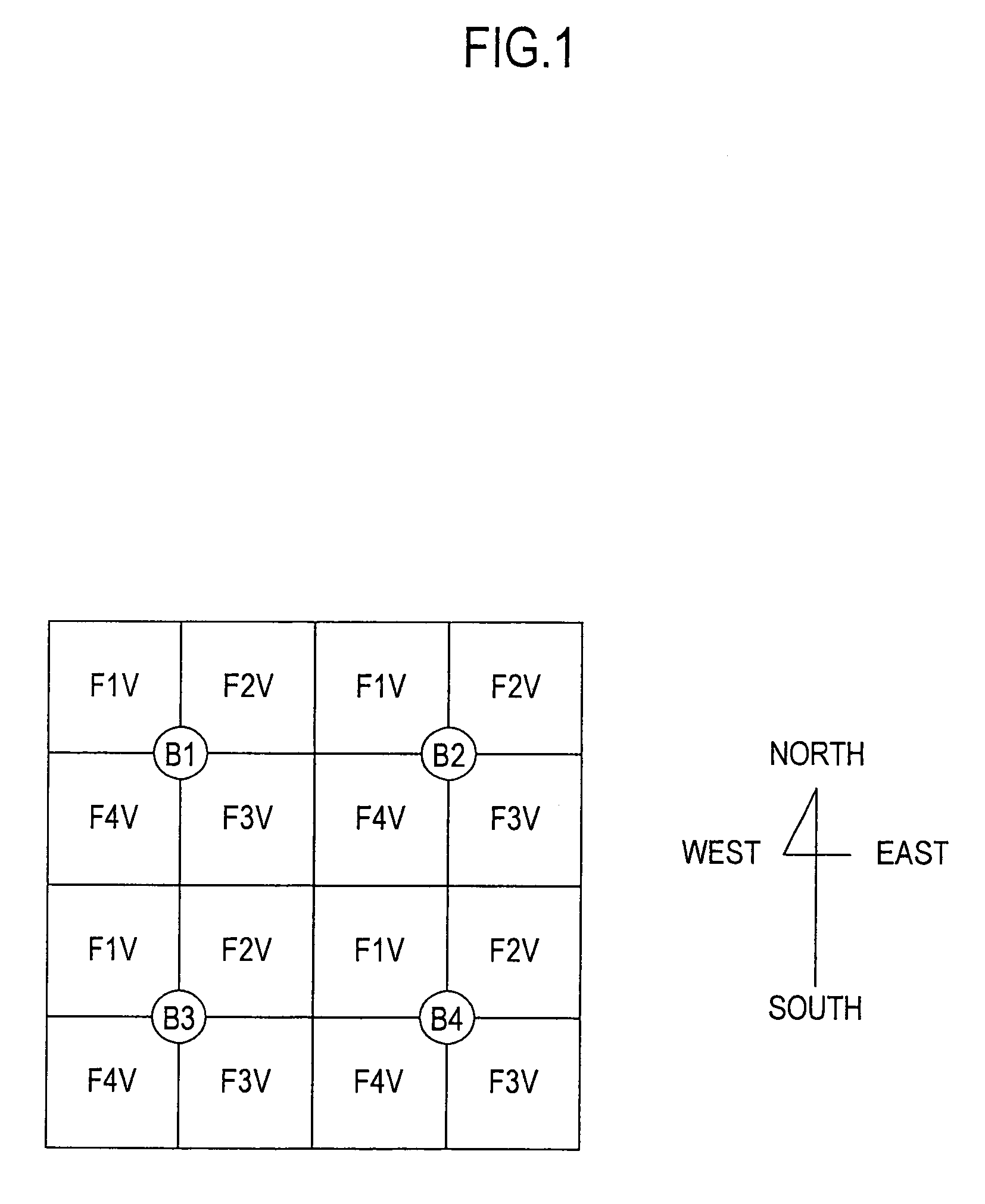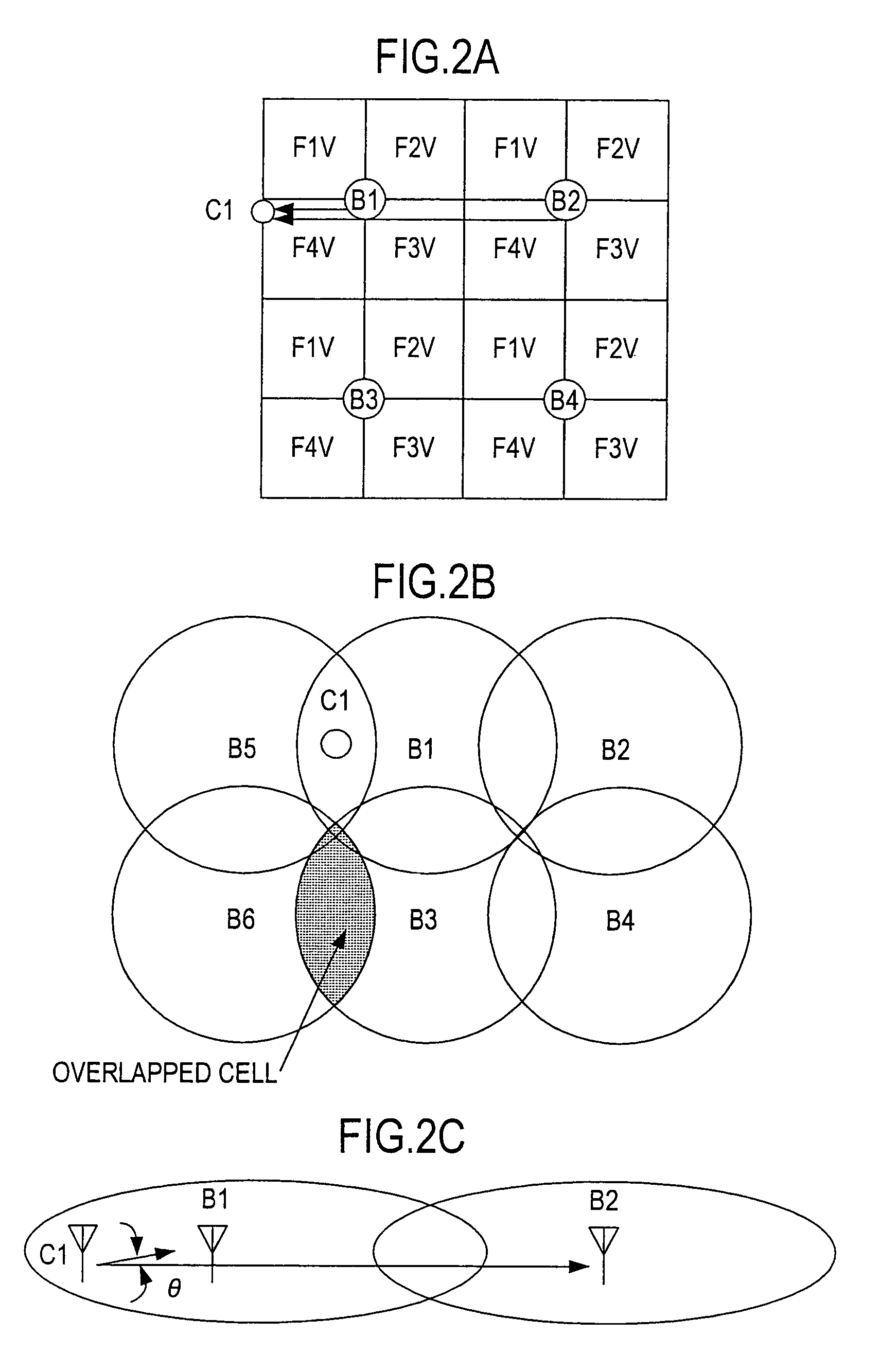Radio system
a radio system and receiver technology, applied in the field of radio systems, can solve the problems of inability to offer high-quality services, substation equipment, and substations to face each other, and achieve the effects of preventing interference, saving frequency resources, and preventing the occurrence of interferen
- Summary
- Abstract
- Description
- Claims
- Application Information
AI Technical Summary
Benefits of technology
Problems solved by technology
Method used
Image
Examples
first embodiment
[0069]FIG. 2 consists of plan views showing the position of a subscriber station and adjacent base stations when interference occurs between them in the radio system according to the present invention. FIG. 2A is a diagram showing interference given by the subscriber station to the adjacent base stations or by the adjacent base stations to the subscriber station. FIG. 2B is a diagram showing actual service areas approximately circular in form with each base station at the center. FIG. 2C is a diagram showing an example of the position of the base stations and the subscriber station between which interference occurs.
[0070]When the base stations are arranged as in FIG. 1, what is expected is interference given by the subscriber station to the adjacent base stations or by the adjacent base stations to the subscriber station. This kind of interference occurs when two base stations fall in a beam width of the antenna at the subscriber station.
[0071]In general, since base stations are ins...
second embodiment
[0080]FIG. 4 is a plan view showing a layout of base stations in a radio system according to the present invention.
[0081]In FIG. 4, B1 to B4 are base stations, numerals following F denote frequencies used, and V or H following each numeral denotes the use of a vertically or horizontally polarized wave, respectively.
[0082]For example, all antennas at base stations using a vertically polarized wave at frequency F1 are arranged to face northwest. In other words, the base stations using the same frequency and the same polarized wave can never face each other, and therefore no interference occurs between the base stations as long as they have the ability to discriminate cross polarization of the antennas.
[0083]Further, since subscriber stations is aimed at the base station concerned, the subscriber stations using frequency F1 direct their antennas in a direction between the south and the east, that is, the antennas never face in the other directions.
[0084]It is apparent from this fact th...
third embodiment
[0093]As apparent from a comparison between FIGS. 5A and 5B, in the third embodiment the position of F1 and F2, and F3 and F4 are replaced with each other to prevent the use of the same frequency in the same area. However, the frequencies may be replaced in a way different from that of FIG. 5B, or the frequencies may not need to be replaced if the base stations have an enough cross-polarization ratio.
[0094]Further, the third embodiment showed the case where additional base stations are installed at about the same location as the existing base stations, but they may be installed with separation from the existing base stations.
[0095]Furthermore, the third embodiment described how to increase base stations using the horizontally polarized wave in the service area of the vertically polarized wave, but the vertically and horizontally polarized waves may be in inverse relation to each other. Furthermore, base stations using vertically and horizontally polarized waves may be mixed in the i...
PUM
 Login to View More
Login to View More Abstract
Description
Claims
Application Information
 Login to View More
Login to View More - R&D
- Intellectual Property
- Life Sciences
- Materials
- Tech Scout
- Unparalleled Data Quality
- Higher Quality Content
- 60% Fewer Hallucinations
Browse by: Latest US Patents, China's latest patents, Technical Efficacy Thesaurus, Application Domain, Technology Topic, Popular Technical Reports.
© 2025 PatSnap. All rights reserved.Legal|Privacy policy|Modern Slavery Act Transparency Statement|Sitemap|About US| Contact US: help@patsnap.com



